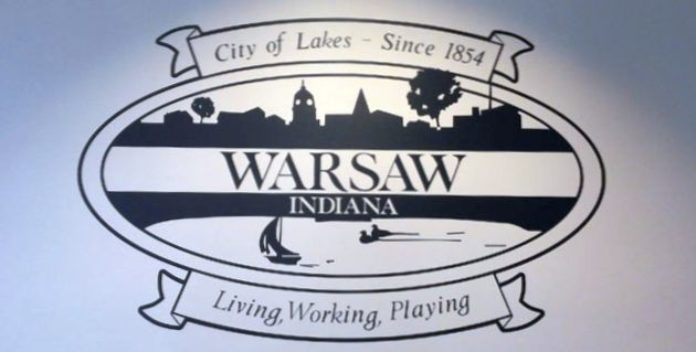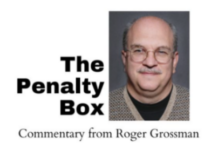Warsaw City Council reached a consensus Friday to move a new proposed sewer rate ordinance forward to its Nov. 6 meeting, but the rate ordinance that was defeated 4-3 Oct. 16 could return.
The new proposal reduces a charge multi-family dwellings would pay, but would leave the city $100,000 per year short in revenue needed to cover proposed wastewater infrastructure expenses.
The city is looking at a $41 million sewer project, which includes $10.1 million in improvements to sewer lines and manholes, some of which are 100 years old, in phase I. Phase II would be a new wastewater treatment plant, which is mandated by the state to be completed by 2020.
Mayor Joe Thallemer told the council the meeting was discussion on “some type of revision to a rate ordinance that was voted down at the last meeting. And those that voted that down had some suggestions as a starting point.”
While councilmen Jack Wilhite, Michael Klondaris and Jerry Frush had supported the original plan, councilmen Ron Shoemaker, Cindy Dobbins, Jeff Grose and Diane Quance voted it down after some landlords and tenants objected.
No vote was taken Friday. At the Nov. 6 council meeting, the first reading of the ordinance will be given. The second reading of whatever the council approves on Nov. 6 will be read on Nov. 20 when a public hearing is also scheduled.
At the Nov. 20 meeting, the council could reduce rate figures but they won’t be allowed to increase them from what they approve Nov. 6.
“We’re looking at over a million dollars of money left on the table if we don’t pass this rate ordinance in a timely fashion to take advantage of (State Revolving Fund) discount rates on our grant. So, that’s the concern,” Thallemer said.
Before the mayor explained the new proposal, Quance made a statement, saying, in part, “As one of the people that opposed the ordinance in conversation with others who had concerns about it, I think one of the things that we all agree upon it is that the pipes need to be fixed. That isn’t an issue. … We do need to move forward to come up with something to get those pipes fixed.”
Thallemer then explained the new rate proposal, comparing it to the 2008 rate ordinance and what the rates would have been under the ordinance that was defeated. For comparison purposes, he stayed with 4,800 gallons of flow and compared a single-family home and four-unit multi-family dwelling.
The 2008 rate – which is still in use – is based on $4.71 per 1,000 gallons of flow. A single-family home and all four multi-family units pay a fixed rate of $22.60, based on the average 4,800 gallons of flow. The 2008 ordinance specifies the collection system portion of the base fee is $6.84. An additional $3.16 is charged to maintain the billing department, putting the total sewer charge per unit at $32.60.
The defeated proposed ordinance was based on $5.65 per 1,000 gallon flow rate, a 20 percent increase over the 2008 rate. That makes the flow rate, based on 4,800 gallons, at $27.12 per month per dwelling unit. The collection system and billing department charges also were raised 20 percent to $8.21 and $3.79 respectively, putting the total at $39.12.
Under the ordinance introduced Friday, the only difference in the new proposal from the Oct. 16 ordinance would be with the charge for maintaining the billing department. The billing component would be reduced to the number of bills a multi-family unit receives. In a four-unit multi-family, where only one bill is provided for all four units, there would be one billing fee of $3.79.
So, under the new proposal, a single-family home would pay $39.12 monthly; the first unit of a four-unit dwelling would pay $39.12; and the other three units would pay $35.33. That fee structure would be extrapolated out to the number of units.
Quance asked if the new ordinance would generate enough revenue to pay the debt service for the project’s bond.
Jeffrey P. Rowe, partner with H.J. Umbaugh & Associates, replied, “It would clearly result in a loss in revenue, but given the rate adjustment for this first phase, looking at what the estimate project costs are, the terms, the financing and so forth, we feel comfortable that even with this change, it would be sufficient to move forward with this current financing. Certainly down the road, there would have to be some modification to make up for that reduction in lost revenue, potentially with the second phase.”
He later said that based on preliminary estimates, the lost revenue would be $100,000 per year.
Klondaris said the landlords don’t want to pay the billing charge, which maintains the system for everybody, including residents in an apartment building. “As a community, I think we all ought to have skin in the game and equity across the table,” he said.
Grose said the council needed to look at what’s fair for every stakeholder. He suggested maybe the base collection system charge should be increased per unit to make up the lost revenue. He later said the new proposal was a step in the right direction and there had to be a base fee for the infrastructure for the good of the community. He also suggested every dwelling unit should get a bill.
Quance said she didn’t want to go backward to a flat fee for another year because the city needed the data. “If we don’t have the data for a year, we’re going to be sitting in the same place next year wondering what in the world each household uses,”?she said.
“One thing I see is, this billing and collection system (charges) should have been added together. Just call it a base collection, because we know we have costs with billing and stuff like that. It’s just part of it. And you have everything. If we just had one single word up there … no one would be in here complaining,” Frush said.
Thallemer said the two charges were separated in 2006 after a cost-of-service study was completed in 2005.
Wilhite said under the new proposal, “The homeowner, in my mind, is still, under this plan, going to be subsidizing the renters. And I have a difficulty with that. A lot of difficulty.”
Randy Rompola, with Barnes & Thornburg, bond legal counsel, explained that whatever the council approved at its Nov. 6 meeting, it would be unable to raise it at the Nov. 20 meeting. However, if the council voted down the new proposal Nov. 6, it could still bring up and approve the proposal from Oct. 16 and then that proposal would be moved forward to the Nov. 20 meeting.
“Nothing that we’re talking about changes the amount of revenue that we need to collect eventually. We’re just changing where we need to collect that money, so if it’s not coming from that billing charge component of the base fee, it would have to be shifted to the collection system portion,” Rowe stated.
He said shifting costs would be counter to the methodology that was used for the cost-of-service study from 2005, which looked at carving out the costs of the whole accounting and billing process.
Klondaris asked to hear from the city’s department heads who were present at the meeting.
In response to Grose’s comments about billing each multi-family unit based on their individual flow, Rebecca Jenkins, utility pavement supervisor, said, “When we start to bill by flow, there’s an apartment with 100 units and one meter. How am I going to bill each person? There’s no possibility because all of their flow is going to one meter. I don’t know what John used, I don’t know what Sally used. There’s no way to do that.”
After Klondaris requested his comments, City Planner Jeremy Skinner said, “I would point out that getting down into the weeds – you may think you removed the weeds, but you didn’t get the root. And looking at it by saying it’s a base billings fee and ‘oh wow, I’m only sending them one bill,’ you’re leaving out all the other administrative costs and you’re focusing on ‘you’re only getting one bill.’ No. The administrative costs for issuing an apartment bill are even higher than administrative costs for issuing a single-family dwelling. So those costs have been spread out across the board, you came up with a fee. If you want to argue or get down into that far of the weeds you got to go down all the way into the root and then you’re trying to figure out ‘what does it cost me to send a stamp out.’ That’s what the cost-of-service study has done, that’s where we’re at, at this point. That’s where you guys have the information.”
He then continued, “You’re being lobbied by someone who wants a lower bill. You can get the same single-family homeowners in here to lobby the same thing, the same argument, I’m not being treated fairly. When you look at those numbers, the simple thing to ask yourself is, ‘Does that look equitable?’ … I see $39.12 and I see $35.33. It doesn’t appear equitable. That’s the simple way to look at it.”
By a margin of 5-2, the council agreed to discuss the new proposal at the Nov. 6 meeting. Against it were Frush and Klondaris.





